Basic Information
Observation Details
Observation Date:
November 29, 2022 - November 29, 2022Submitted:
November 29, 2022Observer:
Clancy Nelson | ESAC ForecasterZone or Region:
Bishop CreekLocation:
Bishop Creek - Not A Good BaseSigns of Unstable Snow
Recent Avalanches?
None ObservedCracking?
IsolatedCollapsing?
None ExperiencedOld hard slabs overlying weak facets cracked around me to a distance of a few meters on northeast-facing slopes above 10,500 feet. These slopes were obviously exposed to the strong winds about 2 weeks ago.
- Slabs: P+ hard, 4-10cm thick
- Weak layer: 3mm depth hoar, F- hard
This makes me nervous about how all the faceted snow out there will behave once loaded with a lot of new snow.
Key Points
I headed up to the Tyee drainage above the South Fork of Bishop Creek to get some pre-storm observations about coverage and the existing snowpack.
- The snow cover is very weak and faceted. It is also discontinuous except in chutes and bowls near- and above-treeline – i.e. avalanche paths and start zones.
- Occasional old hard slabs rest atop the weak facets. Some of these cracked around me and gave me propagating test results. This may be a minor concern now, but I expect the weak snow to fail even more easily and widely once loaded by a bunch of new snow.
Media
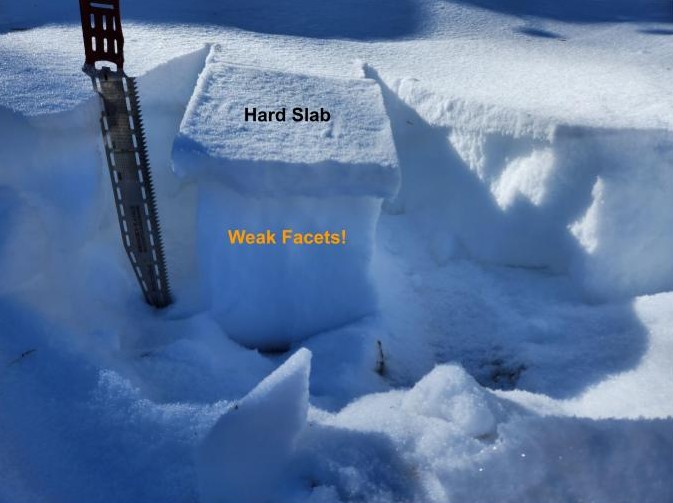
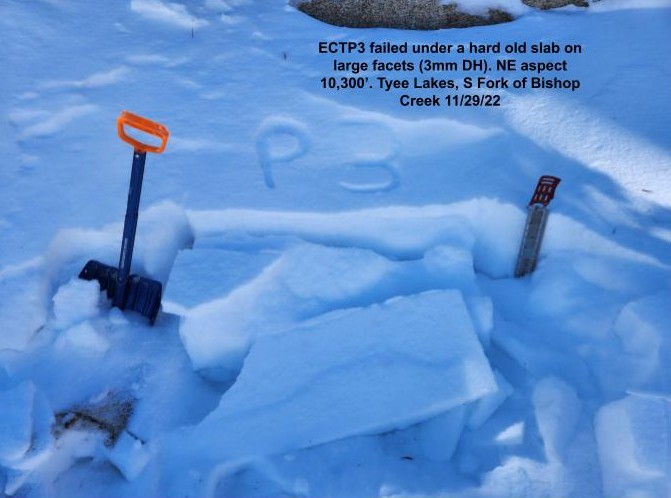
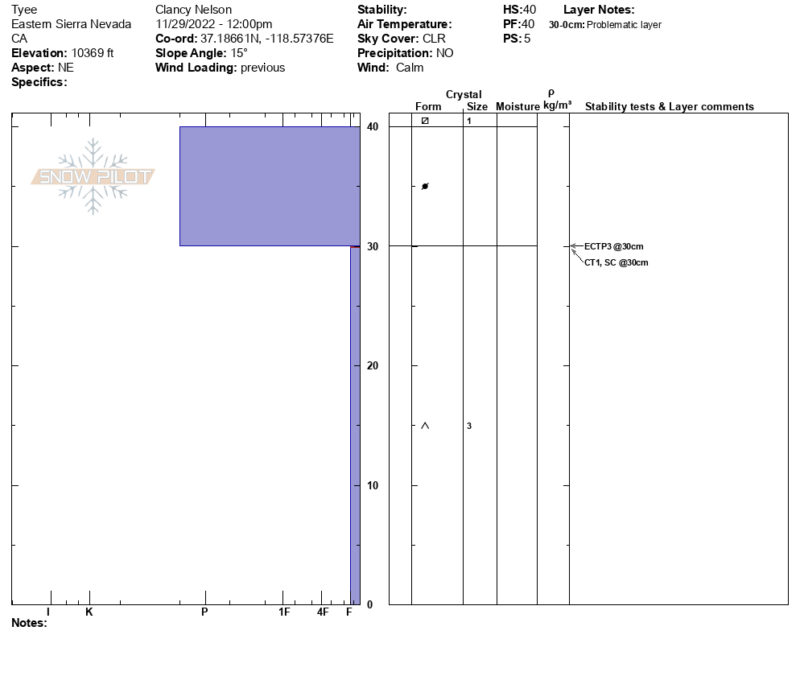
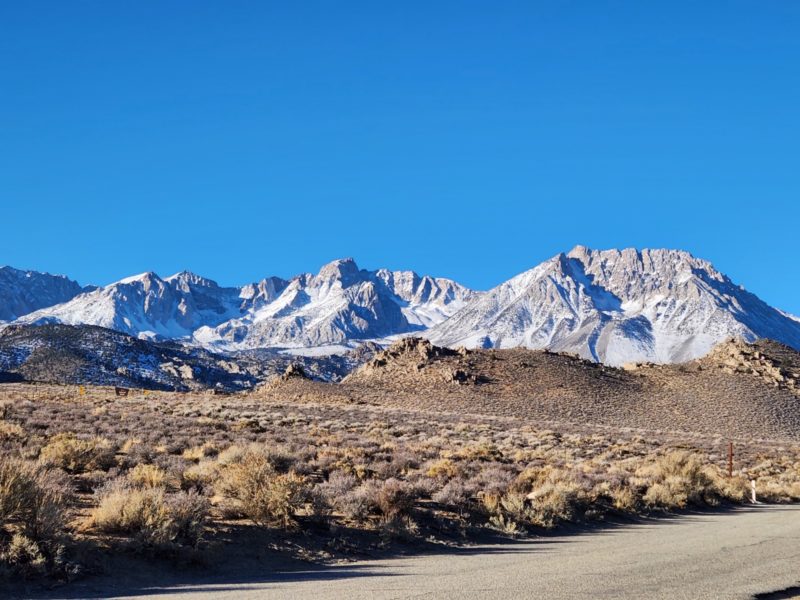
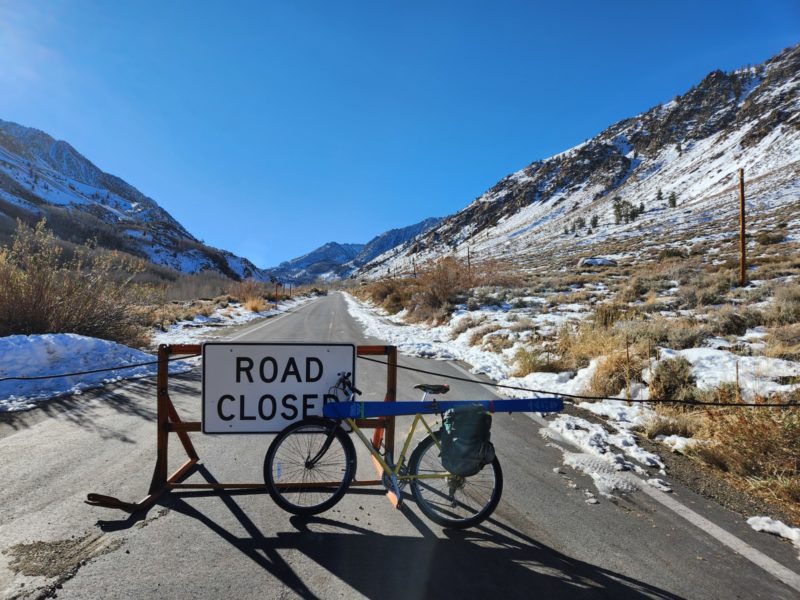
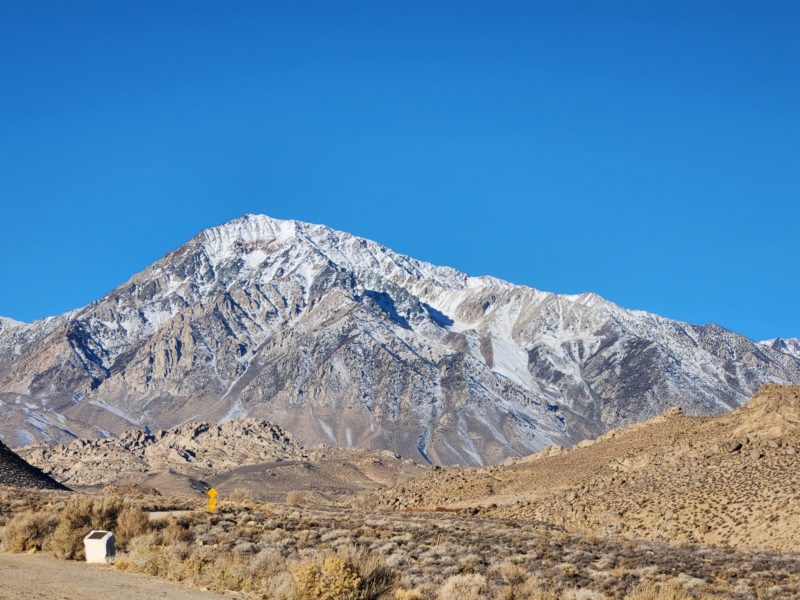
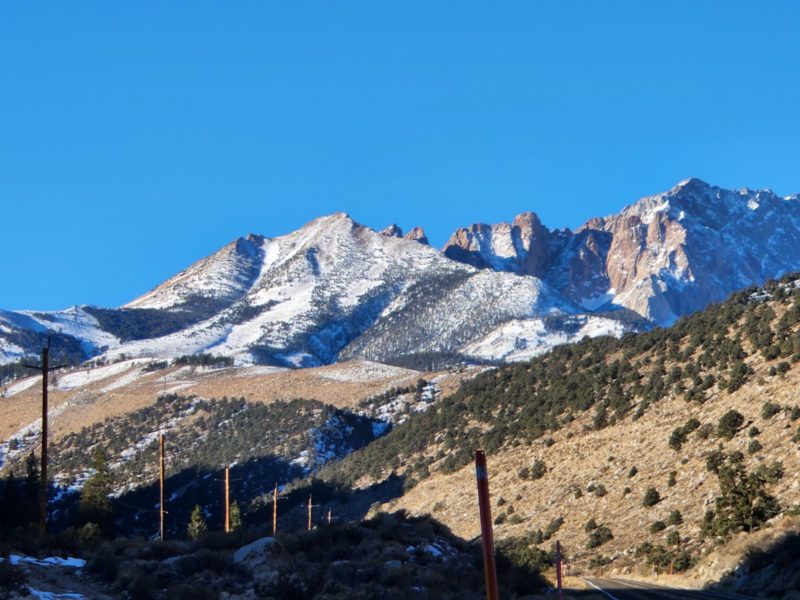
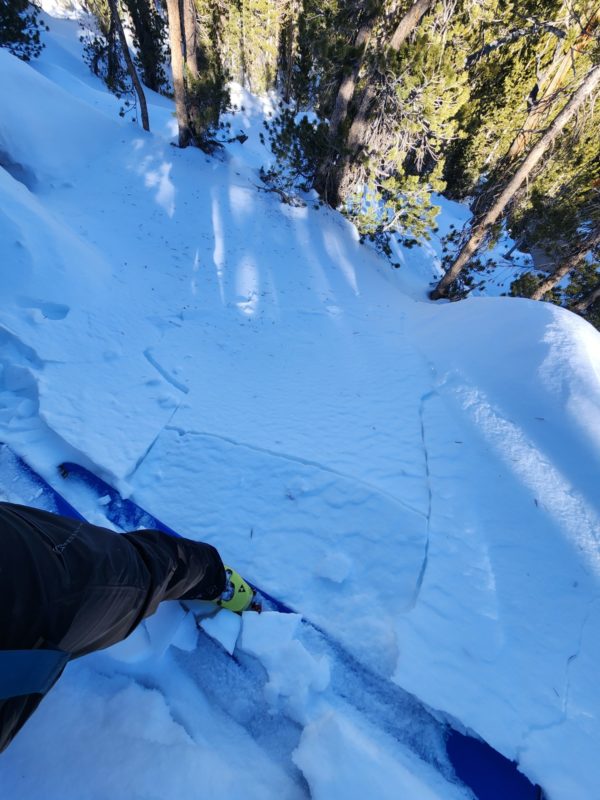
Advanced Information
Weather Summary
Cloud Cover:
ClearTemperature:
32*F at 10,000ft at 11:15am.Wind:
Calm
On an east aspect at 10,000′ at 11:15am: Tair = 0 C, Tsurf = -4 C, T10 = -2 C. Sky = Clear. Wind = Calm. Surface forms = thin melt-freeze crust over facets. HS = 15 cm.
It stayed clear and calm all day with temps above freezing but shaded slopes staying much colder.
Snowpack Observations
- There’s not much snow below about 9,000 feet.
- Between 9,000 and 10,000 feet there’s enough snow to travel on shaded aspects but it is discontinuous and shallow.
- The most continuous snow cover in shaded chutes and bowls near- and above-treeline.
- SW-S-SE aspects are largely bare.
Terrain Use
I biked from the gate to the trailhead and skinned up the trail. Below 10,000′ I walked on my “descent” to avoid gaining speed and hurting myself.
Close